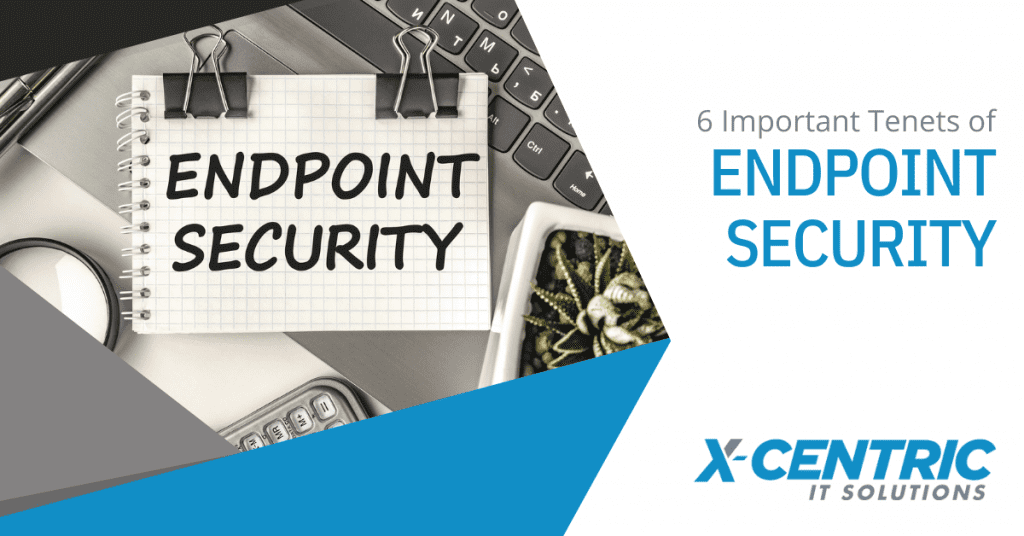6 Important Tenets Of Endpoint Security

Following the advent and effect of the pandemic, companies have begun to incorporate remote work on a major scale. Consequently, more people can be found working outside of typical office settings. Such working environments, however, are exposing an increasing number of endpoint devices, which are becoming the most vulnerable points of secure networks.
According to a Ponemon Institute 2020 study, about 68% of businesses experienced more than one assault through endpoints in the previous year alone.
An endpoint is a device that is linked to a network. With the growing fame of IoT (Internet of Things) and BYOD (Bring Your Own Device) approaches, the number of separate devices linked to a public or private network may easily approach and go beyond thousands.
Endpoints (particularly remote and mobile devices) are a favored target of hackers because they serve as entry sites for ransomware and malware. Basically, mobile phones, servers, smart watches, tablets, printers, automated teller machines (ATMs), and even medical equipment are all examples of endpoints.
You can find network sensors everywhere: hospitals, aircraft, automobiles, and even oil rig drills. As the various types of endpoints evolve and increase, the security solutions that protect them should also increase and evolve.
Some Tenets of Endpoint Security Solutions
Endpoint devices serve as a backdoor for other parties to get illegal access. As a result, the technology is critical for enterprises that wish to protect their networks from potential security breaches.
Here are some important tenets of endpoint security:
Keep your endpoint security solution updated
This is one of those supposedly insignificant tasks that are easy to overlook until it is much too late. IT service providers almost always offer upgrades to their solutions, including patches aimed at correcting latent or known security flaws in their applications.
Failure to update your endpoint security tools simply invites hackers to exploit whatever problem the update was supposed to solve. It makes your business seem like an easy target, which is what hackers (particularly less experienced ones) like.
Employ and monitor BYOD policies
Employees like utilizing their own devices; it’s one of the unintended (and unseen) outcomes of the home PC revolution that we’re only now beginning to address. So, if you let company staff bring their own devices, you must verify that such devices do not create holes or anomalies in your endpoint security boundaries. Ensure your employees’ devices are protected by a standard, enterprise-level layer of security. Also, ensure to check if you need permission before installing your chosen endpoint security solution.
Practice network segmentation
Having sub-networks within your network can double the total performance of an endpoint security solution.
You can start by constructing a privileged area and a well-delineated system having a privilege hierarchy. While segmenting the network, keep organizational aspects and interpersonal and interdepartmental relationships in mind. This ensures that routine company procedures are not disrupted. Additionally, privileged resources should be managed and updated on a regular basis.
Implement a tight VPN access policy in conjunction with MFA
VPNs are now widely employed by most corporate businesses as work culture shifts to the remote work paradigm. However, they are still vulnerable to sniffing, spoofing, and other external threats.
As a result, it is preferable to limit VPN usage, enabling VPN access only at the application layer. This can significantly reduce network-level security risk.
Furthermore, utilizing multi-factor authentication (MFA) can help prevent password loss and account theft from a variety of sources. Adding a supplementary layer of verification when the system detects a log-in from an unfamiliar or unknown location can also improve general security.
Enforce least privilege access
Specifying limits for access and device privileges is an excellent way to guarantee endpoint security. Regular users should not be given administrative rights. A least privilege access policy like this can keep unauthorized users from loading executable code onto endpoints into the network/system.
The principle of least privilege with zero trust
With a growing number of endpoints in businesses, the zero-trust philosophy is crucial to managing risk and ensuring workers have the correct access to company assets. By centrally regulating rules, these endpoints are regularly reviewed against temporary privilege escalation, access requests, privilege revocations, standard device setups, and access permissions. With a well-created identity and access management system in place, a lot of these tasks can be completed automatically, saving valuable human involvement for the rare circumstances that require it.
Following the pandemic, companies have begun to incorporate remote work on a major scale.
Consequently, more people can be found working outside of typical office settings.
About 68% of businesses experienced more than one assault through endpoints in the previous year alone.
Let X-Centric Create a Custom Endpoint for You
Endpoint security solutions have evolved significantly from traditional firewalls and antivirus. They offer a more comprehensive protection against known and undiscovered malware assaults and security exploits.
X-Centric provides a comprehensive corporate solution that combines effective endpoint security with efficient endpoint administration. Features such as heuristics, firewalls, and Endpoint Detection and Response (EDR) systems are combined to enable and maintain optimum security.
Contact us to get started.


